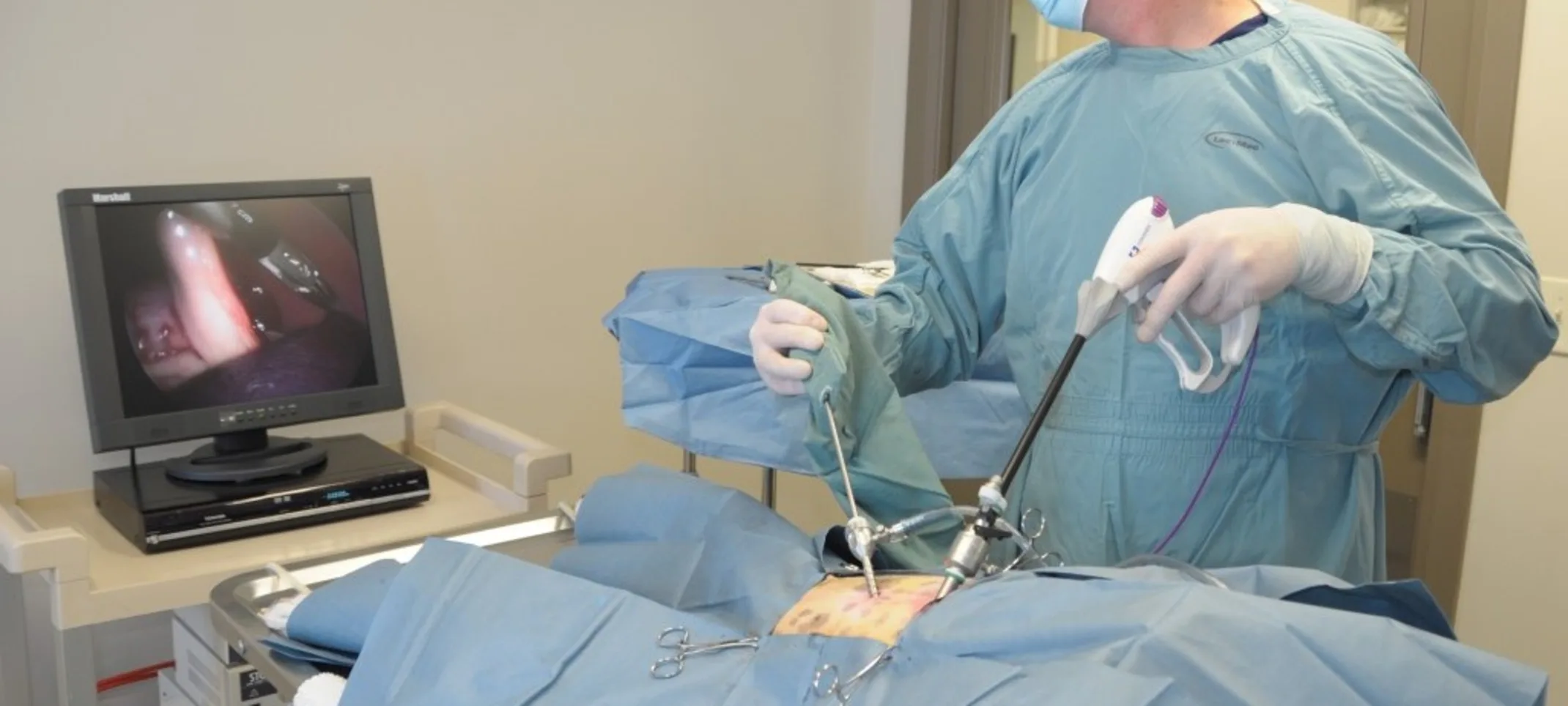Morgan Animal Hospital

Laparoscopic Spay
Laparoscopic surgery, also known as “band aid surgery” or “keyhole surgery”, is a less invasive method of surgery. If laparoscopic surgery is recommended for your pet, we will do everything possible to keep them safe and comfortable before, during, and after the surgery.
Why would my pet need laparoscopic surgery?
Laparoscopic surgery is used for spaying female pets, collecting internal biopsies, removing urinary stones, and to prevent gastric dilatation volvulus.
When should my pet have laparoscopic surgery?
Our veterinarians may recommend laparoscopic surgery as a less invasive option compared to open surgery. Laparoscopic surgery has many benefits including less pain, faster recovery, no need for stitches or protective cones, better visibility for the veterinarian, and quicker surgery time.
How does laparoscopic surgery work?
Laparoscopy is a minimally invasive procedure performed by passing a narrow medical camera (laparoscope) through a tiny incision into the abdomen. The laparoscope provides a magnified view of the organs allowing for greater precision.
A Laparoscopic Spay (medically termed a laparoscopic ovariectomy) requires a second tiny incision (typically <1cm) for the placement of medical instruments to perform the spay.
The ovaries are identified and isolated with endoscopic forceps. A special vessel sealing device carefully cauterizes, seals and cuts the ovarian blood vessels and ligament, thereby freeing the ovary from the rest of her uterus. The ovaries are then retrieved and removed through the tiny instrument incision. The uterus is left intact and in its natural state.
Research has found that there is no benefit to removing the uterus**. Retaining the uterus will not increase the risk of breast cancer or uterine infections, nor will your dog go through any heat cycles.

